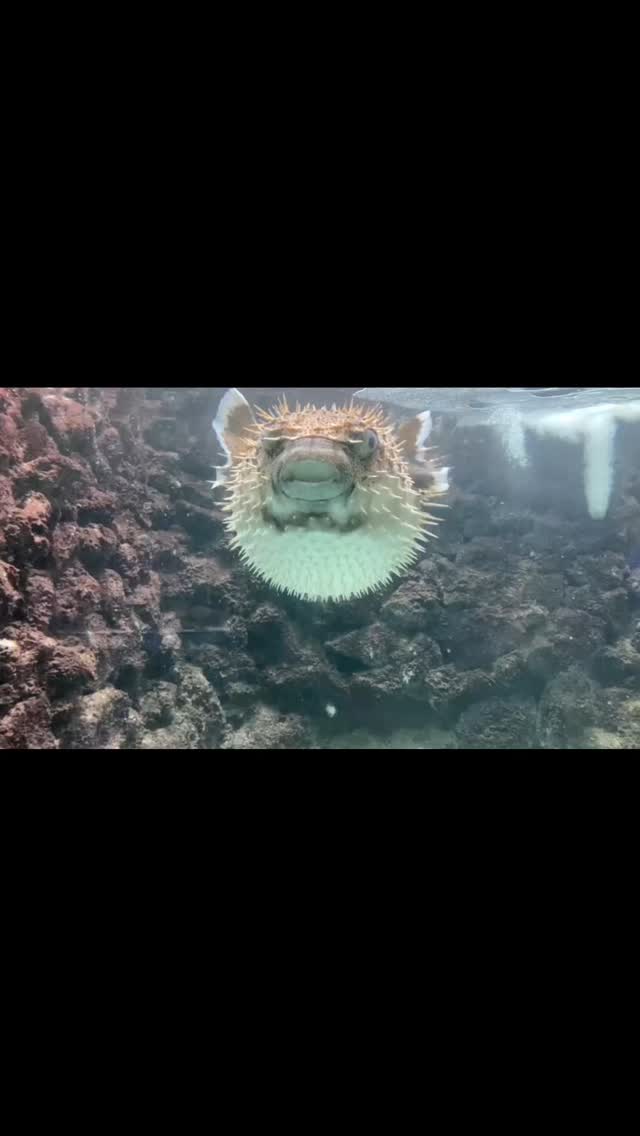- Overview of the Spot-fin Porcupinefish and its role in the Bermuda marine ecosystem.
- Detailed description of their unique defense mechanism and behavior patterns at BAMZ.
- Discussion of the physiological features allowing the Porcupinefish to adapt to its marine environment.
- Insight into the importance of self-maintenance behaviors observed in captive Porcupinefish.
- The role of zoos and aquariums in promoting conservation and education about marine life.
The Spot-fin Porcupinefish, scientifically known as Diodon hystrix, is an intriguing member of the marine community in Bermuda’s waters. This species is a prominent example of the diversity and adaptability found in pufferfish, boasting a distinct morphology and behavioral repertoire. Inhabiting coral reefs and rocky substrates, it’s a vital species for local ecosystems, contributing to the intricate web of maritime life through its interactions and ecological functions.
One of the most fascinating aspects of the Spot-fin Porcupinefish is its well-developed defense mechanism. When threatened, these fish can inflate their bodies, transforming themselves into intimidating, spikey spheres that resemble beach balls. This unique ability is not just a show of size; the protruding spines are a formidable deterrent to predators. Such adaptive strategies exemplify evolutionary brilliance, showcasing how the anatomy of the Porcupinefish supports its survival in the wild.
Interestingly, at facilities like the Bermuda Aquarium, Museum, and Zoo (BAMZ), these puffers have been observed inflating even without apparent threat. This behavior could be likened to a routine exercise, possibly a way to maintain muscle tone and resilience. The sporadic inflation acts as a self-check mechanism, ensuring their physiological features are in peak condition. This is a delightful reminder that animals engage in such self-care practices, mirroring notions of adaptability and resilience.
The physical architecture of the Spot-fin Porcupinefish provides it an edge in survival. The presence of a highly flexible and stretchable skin allows it to accommodate rapid changes in volume without damage. This physiological design, paired with robust spines, serves as an effective shield against predators. Moreover, its ability to expel water quickly enables the fish to return to its streamlined shape, essential for efficient swimming and navigation through the reef systems.
Self-maintenance behaviors are common in captivity where animals might not face the same environmental pressures as in the wild. These behaviors can be crucial for maintaining overall health and psychological well-being. For the Spot-fin Porcupinefish at BAMZ, these actions might serve to mimic natural interactions, preserving vitality and reducing stress. The captive environment must support these instincts to foster optimal conditions that emulate the wild.
Aquariums and zoological institutions are pivotal in conservation and education efforts. By facilitating captive environments that resemble natural habitats, they enable in-depth study of species like the Spot-fin Porcupinefish. Such insights are invaluable for conservation strategies, particularly when considering global threats like climate change and habitat loss. By engaging the public through exhibits and educational programs, these institutions can inspire awe and advocacy for marine conservation.
Educating the public about the ecological roles and adaptive strategies of marine life, such as the Spot-fin Porcupinefish, is crucial for fostering a deeper appreciation of our aquatic ecosystems. These efforts aid in promoting conservation initiatives and highlight the pressing need for protecting natural habitats. Through continued research and observation, zoological facilities can contribute to the broader scientific understanding of marine biodiversity, supporting the ongoing endeavor to conserve these vital ecosystems.
Ultimately, the Spot-fin Porcupinefish stands as a beacon for biodiversity. Its presence in Bermuda’s coastal waters underscores a delicate balance, one that relies heavily on conservation efforts and ecological stewardship. As we venture into the new year, the lessons taught by these remarkable fish about adaptability, self-preservation, and love for their unique existence resonate strongly, inspiring action and respect for the natural world.
*****
Source Description
We love a good flex 💪 going into a new year, like our Spot-fin Porcupinefish (Diodon hystrix)–one of the largest pufferfish that can be found in local Bermuda waters 🐡.
These spikey puffballs can inflate to the size of a beach ball as a defense mechanism, enhanced further by the spines that extrude from their body.
Interestingly, our puffers at BAMZ will sometimes inflate for no apparent reason. Likely, it is to stretch and flex, ensuring everything is working as it should. They’re not mad, they’re just maintaining resilience, staying adaptable and the best flex of all–loving themselves, whether round and spikey or smooth and sleek–setting some great intentions for the new year 🤗


